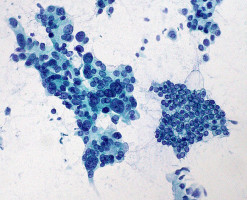
Investigators at the Cedars-Sinai Samuel Oschin Comprehensive Cancer Institute are developing a novel, multistep investigational treatment for one of the most complex and difficult-to-treat forms of the disease, locally advanced pancreatic cancer.
Locally advanced pancreatic cancer has the lowest survival rate of any solid tumour, with a cumulative five-year survival rate of only 4 percent for all stages of disease.
Surgery is rarely an option for patients because tumours often involve vital blood vessels.
Chemotherapy and radiotherapy given concurrently remain the mainstay treatment, yet to-date, no treatment has had a significant impact on improving outcomes.
"To move the needle forward toward prolonged survival and better treatment outcomes, our research team created a combined investigational regimen for patients with locally advanced pancreatic cancer," said Richard Tuli, MD, PhD, a radiation oncologist in the Department of Radiation Oncology and a member of the Samuel Oschin Comprehensive Cancer Institute.
"Coupled with this research treatment, we are also looking to identify patient biomarkers, or molecular signatures, that may provide clues to how, and why, some patients respond better than others."
Tuli was the first author of a pre-clinical study recently published in the journal Translational Oncology.
Using animal models, the study evaluated a novel treatment for pancreatic cancer that combines radiation, chemotherapy and treatment with a specific drug that can inhibit the repair of cancer cells damaged by chemotherapy and radiation.
Successful research findings led to a clinical trial now enrolling eligible patients.
Many standard cancer treatments for pancreatic cancer, including chemotherapy and radiation therapy, kill tumours by damaging their DNA.
When such DNA damage occurs, proteins known as PARPs move to the site of damage and begin to mend these broken strands of DNA, allowing cancerous cells and tumours to recover, grow and proliferate, thereby escaping the effects of treatment.
With this knowledge, researchers combined radiation with a drug to prevent PARP from repairing cancerous cells.
When the treatment was given to laboratory mice, the combination resulted in prolonged survival.
"Based on this research, we are now conducting a first-in-human study combining the PARP inhibitor with radiation and chemotherapy in patients with locally advanced pancreatic cancer, with an ultimate goal of improving survival rates and treatment outcomes," said Tuli.
The investigational treatment regimen also could prove beneficial to patients with other forms of cancer.
Recent research findings suggest PARP could be beneficial for patients who carry either or both the BRCA1 or BRCA2 mutations.
"Normal" BRCA genes help suppress tumour formation and repair damaged DNA; the mutated genes' protective mechanisms are compromised, leading to genetic defects that result in cancer.
But the "defective" repair capability is a process that may be exploited by treatments, such as PARP inhibition, which further impairs the ability of tumours to repair their own DNA after insult with radiation.
In addition to adding a novel PARP inhibitor to the regimen, investigators are seeking to identify other markers related to DNA damage that could provide a molecular signature, or biomarker, to forecast how a patients' tumour would respond to treatment and help guide personalised treatment options in the near future.
"Identifying individual biomarkers to better understand how a patient may respond to treatment is an essential step toward personalising medicine for every individual," said Steven Piantadosi, MD, PhD, director of the Samuel Oschin Comprehensive Cancer Institute and Phase One Foundation Chair.
Source: Cedars-Sinai Medical Center
We are an independent charity and are not backed by a large company or society. We raise every penny ourselves to improve the standards of cancer care through education. You can help us continue our work to address inequalities in cancer care by making a donation.
Any donation, however small, contributes directly towards the costs of creating and sharing free oncology education.
Together we can get better outcomes for patients by tackling global inequalities in access to the results of cancer research.
Thank you for your support.